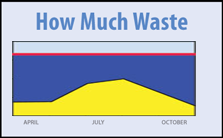Recycling Waste Water in Antarctica
A state-of-the-art wastewater treatment system being built for Davis Station in Antarctica will convert effluent into some of the cleanest water in the world.
The effluent will have minimal impact on the marine environment when it’s discharged into the ocean.
 Professor Stephen Gray
Professor Stephen Gray
Professor Stephen Gray, director of Victoria University’s Institute for Sustainability and Innovation, said, “The system’s designed to function in rugged conditions, be simple to operate, have low maintenance needs and require a minimal amount of chemicals to run it.”
He added, “The plant can even be operated remotely from Australia if needs be during the harsh Antarctic winter.”
The germ-killing technologies used in the advanced treatment plant will achieve an outstanding 13 ‘log reduction’ in pathogens. A one log reduction kills 90% of pathogens, a two log reduction kills 99%, and so on to 11 decimal places.
The average log reduction from a freshwater treatment plant in Australia is four to five.
“To achieve this high kill rate, the treated effluent will undergo ozone disinfection, ceramic microfiltration, passage through a biologically activated carbon filter, reverse osmosis, ultraviolet disinfection and chlorination,” said Gray.
“The result will be some of the cleanest water in the world.”
There are no immediate plans to use the purified water for drinking, but the team is researching that option in line with Australia and other international drinking water quality guidelines.
The advanced treatment plant has been built to fit inside two shipping containers.
This will include space for a laboratory where regular water quality tests can take place. After those tests are completed in 2015, it will be shipped to Victoria University for further extensive testing before being shipped to Antarctica for installation during the 2015-16 season.


